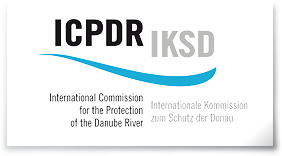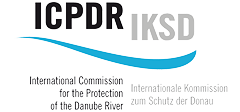About JDS4
Three Joint Danube Surveys have previously been conducted, in 2001, 2007, and 2013. The fourth of its kind, JDS4 will start in mid-2019 at sampling sites in 13 countries across the Danube River Basin.
Why Joint Danube Surveys?
The key purpose of Joint Danube Surveys (JDS) is to produce reliable and comparable information on carefully selected elements of water quality for the length of the Danube River, including its major tributaries, and to harmonise water monitoring practices and procedures in accordance with the EU Water Framework Directive (WFD) through close coordination and further training.
The three main objectives of JDS4 are the following:
- to collect data on parameters normally not analysed during ongoing monitoring;
- to collect information about the water characteristics and organisms living in a variety of locations along the river in a format that is readily comparable across regions and countries; and
- to raise awareness of the quality of the Danube waters and the ongoing protection and restoration efforts.
JDS4 introduces a new approach to investigative river monitoring
Previous Joint Danube River Surveys were carried out by a small team of leading experts. That team of experts travelled throughout the Danube region conducting the sampling and, in the case of biology, microbiology and hydromorphology, were responsible for analysing the samples collected. National experts participated only in their respective countries and primarily served as observers. For the fourth JDS a new concept will be used.
JDS4 will employ a new approach. There will be a more active role for national authorities and individual countries to carry out the monitoring. It is expected that the approach will lead to a more flexible and effective process and better results. This enables participating countries to adopt approaches which are new or innovative and to further engage with the project.
We hope that the combined effort will foster coordination and improvement, in particular when the countries are able to share their experiences, exchange ideas, and harmonise their processes.
In addition, there will be a special monitoring team tasked with ad-hoc and non-conventional technical testing. Three particularly interesting aspects that require special monitoring include:
- Effect based methods/non-target screening (chemistry): previous surveys have been excellent examples of using effect-based analyses in combination with target chemical analyses as a means of investigating overall contamination.
- Environmental DNA (eDNA) testing: is a method to detect DNA that is released from an organism into the environment, being the Danube in this case.
- Microplastics: results from studies on European rivers show that plastics are ubiquitous in freshwater systems. As such data has not yet been gathered for the Danube, it is expected that JDS4 could produce an information baseline on the occurrence of plastic particles for the whole Danube.
The new parameters: new opportunities for public engagement
One component of JDS4 is raising awareness and public interest in scientific activities along the Danube. Public involvement is currently being planned and will include events and activities related to JDS4. We will update this webpage with our activities and share them on social media when the schedule is determined.
Legal framework
The EU Water Framework Directive requires that each country in the Danube River Basin periodically assess certain water characteristics in its territory, while the Convention on co-operation for the Protection and sustainable use of the River Danube (Danube River Protection Convention or DRPC) sets out processes, requirements and goals for cooperation throughout the assessment process with respect to the Danube River Basin. Furthermore, the Danube Declaration 2016 directs the ICPDR to prepare, based on the experience of the previous surveys, a fourth Joint Danube Survey to be carried out in 2019.
The outcomes of the JDS4 should provide the information, and fill any previous knowledge gaps, necessary to complete the 2021 update of the Danube River Basin Management Plan. The results of the survey will be presented in a public report and other publicly available documents. The results also serve as the basis for undertaking policy initiatives that are consistent with the WFD, the Danube River Protection Convention and the Danube River Basin Management Plan.
Three Joint Danube Surveys have previously been conducted, in 2001, 2007, and 2013. The results of these surveys are available.




